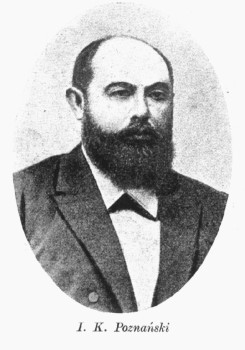According to the definition from the “Dictionary of foreign words” published in 1882, printed by the well-known bookseller Michał Arct (1840-1912), a lodzermensch was “a type of Lodz hustler created under the German-Jewish influence; he does not admit to any nationality and cares only about the interests”. But was it really so? Scientists today have many doubts, seeing the complex nature of the term lodzermensch.
This term was known from at least the 1870s, and it meant as much as “the man of Łódź”, so in fact, it meant a lot. However, it should not be equated with a “Łódź inhabitant”. The German-Jewish influence on the crystallization of this concept, especially mentioned in the Dictionary, is unclear. Some researchers believe that Germany was the homeland of lodzermensch whose Germanic patriotism over the years transformed in Łódź in a peculiar way and led to the emergence of a new phenomenon later described as Łódź patriotism that never aspired to be Polish.
Others believed that the nature of the phenomenon was much more complicated and did not emphasize Jewish cultural influences at all. As it was written in 1912, these persons could be alternately Poles or Germans, “according to the environment in which they were at the moment”. The genesis of the lodzermensch family was perceived in a different way by Dr Stanisław Kutrzeba (1876-1946), a Polish historian of law at the Jagiellonian University. He included mainly assimilated Jews in this group.
Today no one will resolve these disputes anymore, but it seems that the Jewish participation was the strongest in shaping the image of lodzermensch. Julian Tuwim also agreed with that opinion. Therefore, it is assumed that this “category” of the inhabitants of Łódź included representatives of three nationalities – Jews, Germans and Poles with some Russians or Armenians.
Another, quite perverse concept of the genealogy of these individuals was published Adam Hemer from the University of Lodz, who wrote, “it was not a lodzermensch that was developed under the German-Jewish influence, but rather the German-Jewish-Polish element was developed under the influence of Lodz”.
Not only the Jewish intelligentsia, but especially Władysław Reymont, who created a definitely unflattering collective portrait of them in “The Promised Land”, had a huge impact on today’s view of the lodzermensch genealogy. It is significant, however, that in the workers’ folklore the image of Łódź factory owners was quite different. They were strong, adamant people, even “good lords” who cared about their employees.





